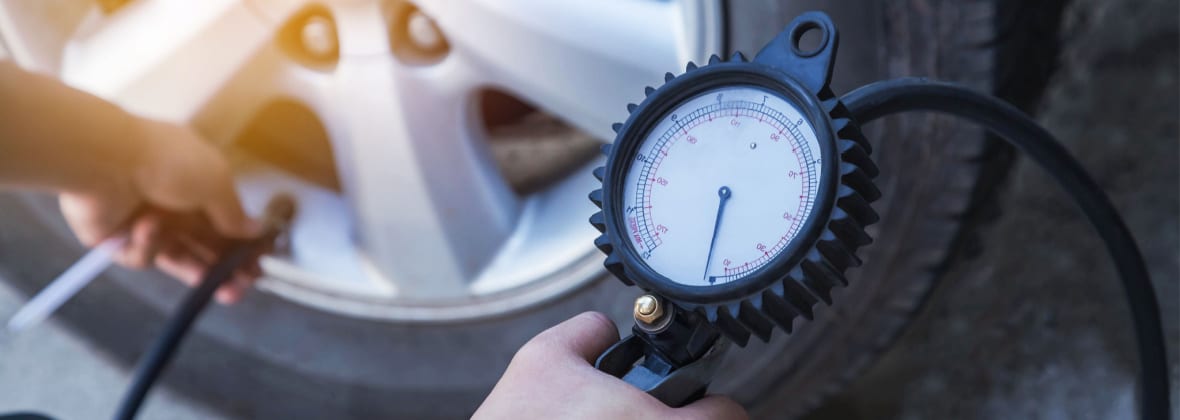Winter Car Care 101: How To Deal With Low Tire Pressure In Cold Weather
October 5, 2022
Tires

To keep your vehicle safe and fuel-efficient through the winter months, you need to know how to manage low tire pressure in cold weather, and that’s what today’s post is all about.
Read on to learn more, or contact your local TIRECRAFT for personalized advice on managing low tire pressure in cold weather.
How To Deal With Low Tire Pressure In Cold Weather
The best way to deal with low tire pressure in cold weather is to anticipate it and plan accordingly.
As a rule of thumb, every time the temperature decreases by 10°C, you should expect your tire pressure to drop between 0.07 to 0.14 bars or 1 to 2 pounds per square inch (PSI).
Don’t panic—this does not mean that your tires have sprung a leak. The air isn’t leaking out of your tires; it’s just contracting. Science says so: as temperatures drop, the molecules that make up the air slow down and move closer together, condensing into a smaller space, thus creating a higher density and less air pressure than we would see in warmer air.
With this in mind, you should resist the urge to run out and add air to your tires at the first sign of low tire pressure. In most cases, air pressure will rise again after a few minutes of driving once your tires have a chance to heat up, and your TPMS light should turn off. That said, there are some instances where it’s a good idea to add some extra air to your tires, as long as you’re well within the maximum pressure listed on the sidewall, and your local TIRECRAFT can help you identify when the time is right.
Of course, not all cases of pressure loss can be attributed to temperature drops, and we can’t always look to our TPMS system to tell us when something’s more serious is afoot. After all, TPMS sensors are known to malfunction, especially as they approach their 5-10 year service life, and recent tire changes or rotations can also trigger TPMS sensors.
To determine whether you’re dealing with cold-weather contraction or a genuine leak, you’ll need to commit to regular pressure checks—something more than one-third (37%) of Canadians aren’t doing, according to the Tire and Rubber Association of Canada’s 2018 Omni Report.
For best results, we recommend:
- Checking your tire pressure at least once per month—ideally more!
- Checking your air pressure when tires are cold
- Checking your vehicle’s handbook to determine the minimum amount of air pressure needed in cold tires to support your vehicle
- Using a quality gauge and air compressor
Be sure to look out for warning lights/tire pressure lights, as this could be an indicator you need to get your tires checked.
Weekly pressure checks will give you an accurate baseline cold-weather reading which you can use to spot deviations that may indicate a leak. If your air pressure is falling faster than 1-2 PSI per 10°C decrease in temperature, it’s probably time to book a tire inspection and repair. When crunching the numbers here, remember also that it’s normal to lose about 1-2 PSI per month. To avoid reaching high pressure, make sure you pay attention to the tire pressure monitoring system and try your best to stay within the recommended pressure limits.
Prepare For Winter Car Care: Contact Your Local TIRECRAFT
If you need a handheld tire pressure gauge or portable compressor, contact your local TIRECRAFT. We’ve got a great selection of tools to help you manage low tire pressure in cold weather, and buying from us can earn you rewards points to lower the costs of future products and services.
To learn more about managing low tire pressure in cold weather, don’t hesitate to reach out to your local TIRECRAFT dealer today.
Back

